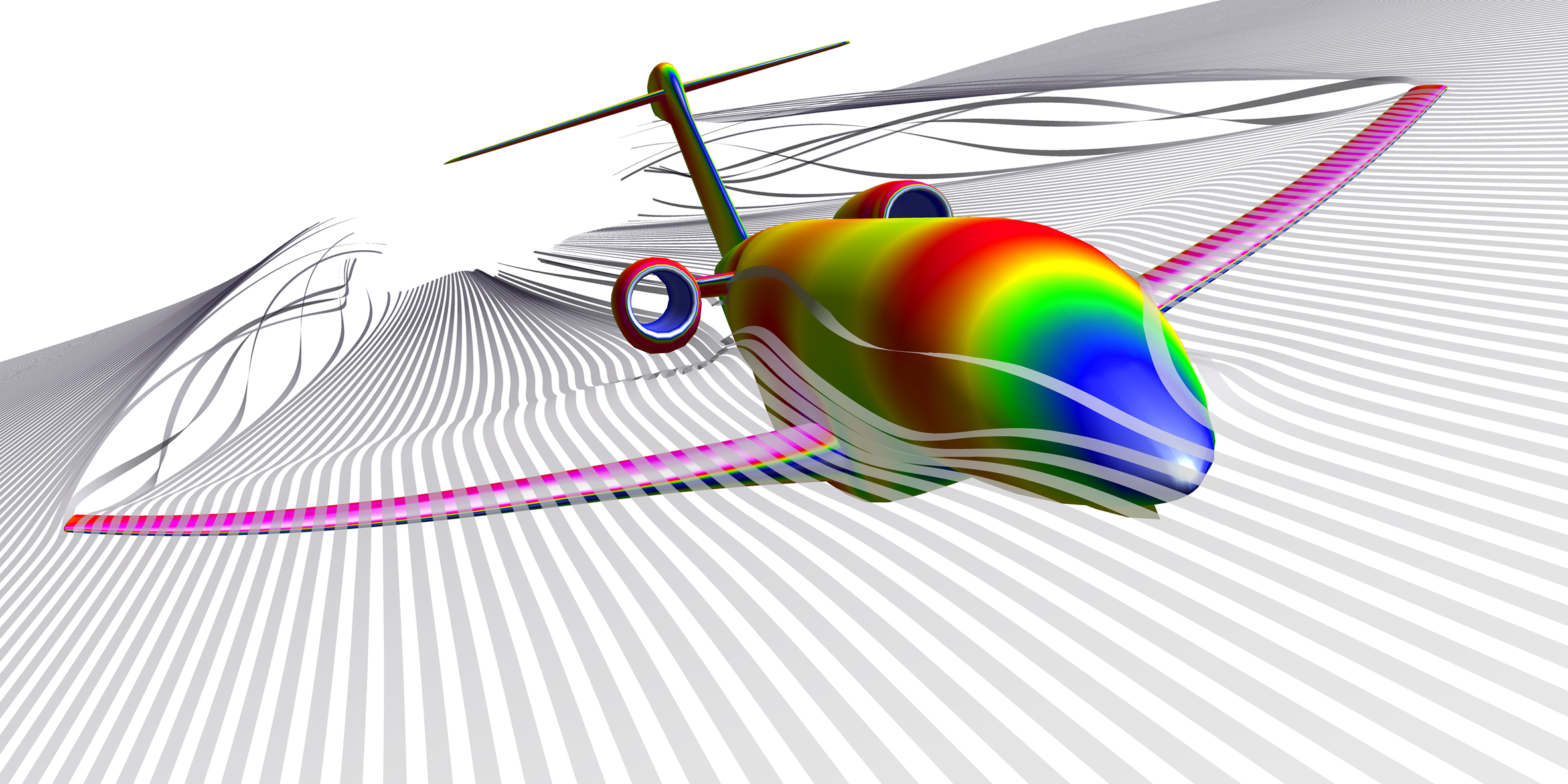We’re excited to spotlight the 2015 doctoral research of Ubaldo Cella, 𝘚𝘦𝘵𝘶𝘱 𝘢𝘯𝘥 𝘝𝘢𝘭𝘪𝘥𝘢𝘵𝘪𝘰𝘯 𝘰𝘧 𝘏𝘪𝘨𝘩 𝘍𝘪𝘥𝘦𝘭𝘪𝘵𝘺 𝘈𝘦𝘳𝘰𝘦𝘭𝘢𝘴𝘵𝘪𝘤 𝘈𝘯𝘢𝘭𝘺𝘴𝘪𝘴 𝘔𝘦𝘵𝘩𝘰𝘥𝘴 𝘉𝘢𝘴𝘦𝘥 𝘰𝘯 𝘙𝘉𝘍 𝘔𝘦𝘴𝘩 𝘔𝘰𝘳𝘱𝘩𝘪𝘯𝘨. The bases of this work refer to a collaboration between the University of Rome “Tor Vergata” and the aircraft industry Piaggio Aerospace aimed to the implementation of FSI (Fluid Structure Interaction) aeroelastic analysis procedures. The aim is to demonstrate the capability of RBF mesh morphing to enhance the development of efficient high fidelity FSI analyses procedures by a 2-way and a modal superposition approach. The quality of the solutions of the methods implemented was assessed against two static experimental test cases: a complete aircraft model tested in transonic conditions (provided by Piaggio Aerospace) and the RIBES wind tunnel model consisting in a typical metal wing box equipped with a set of strain gauges able to provide the actual stress state of the wing under aerodynamic loads.
Research Highlights include: innovative methodologies (developed and compared two aeroelastic simulation strategies: a fully coupled 2-way FSI method and a modal superposition approach, both integrated with Radial Basis Function (RBF) mesh morphing to improve mesh adaptability and computational efficiency); Mesh Morphing capabilities (RBF mesh morphing enabled high-quality surface and volumetric mesh deformation, supporting accurate shape updates throughout simulation iterations without requiring mesh regeneration); experimental validation (the computational methods were validated against two reference test cases: a full-scale Piaggio P1XX aircraft model under transonic flow conditions and the RIBES wind tunnel model, a detailed metallic wing box instrumented with strain gauges and pressure taps to capture aerodynamic loads and structural stress states); performance and accuracy (the modal approach proved especially effective in cases of small deformations, delivering results consistent with those of the more computationally demanding 2-way coupling. Simulations using only a limited number of structural modes achieved high accuracy, making this method viable for early-stage design analysis).
The work offered valuable recommendations for future structural modeling improvements—particularly regarding accurate load distribution between spars and skins—and laid the groundwork for future dynamic FSI studies.
You can now read the presentation and the full thesis.



